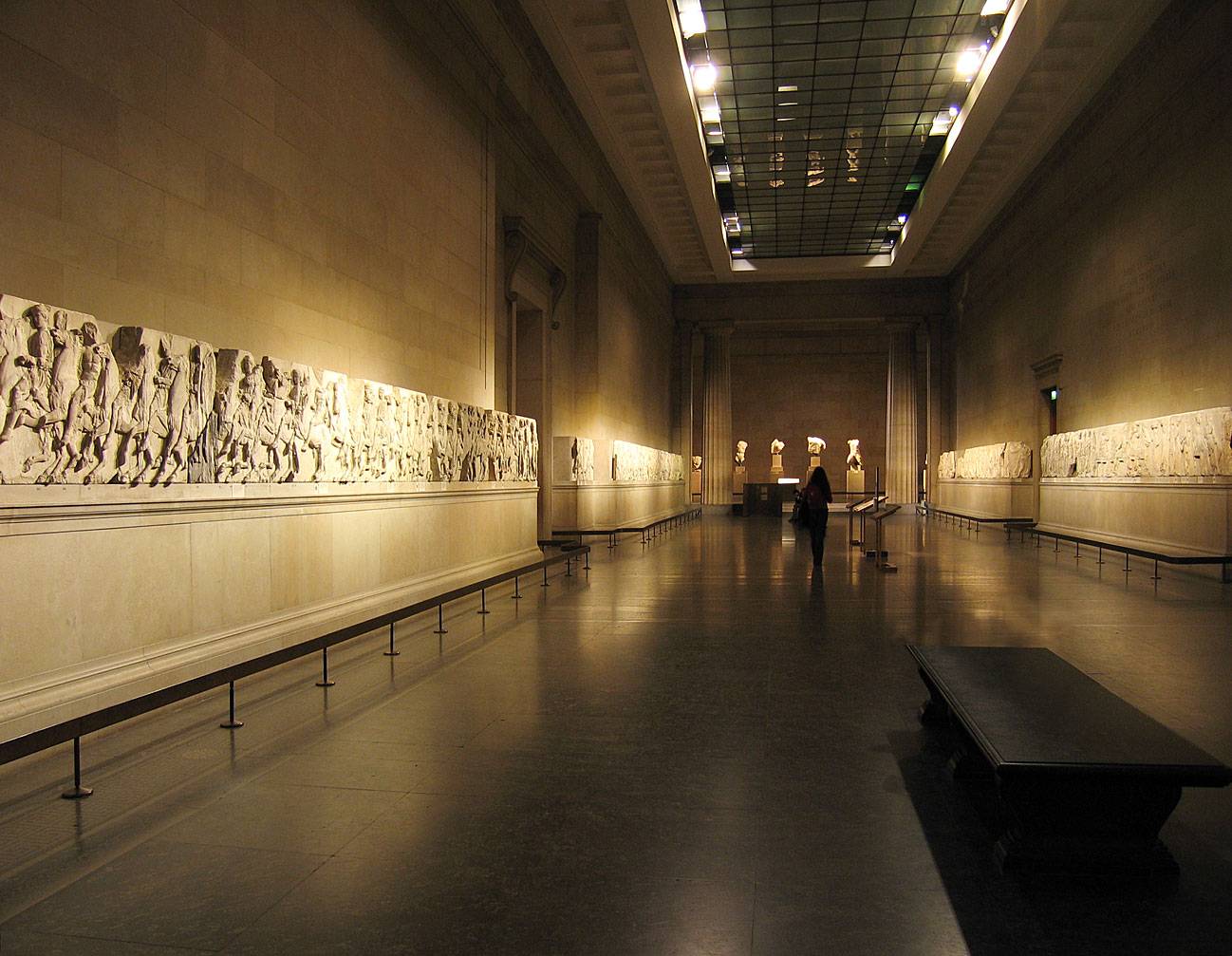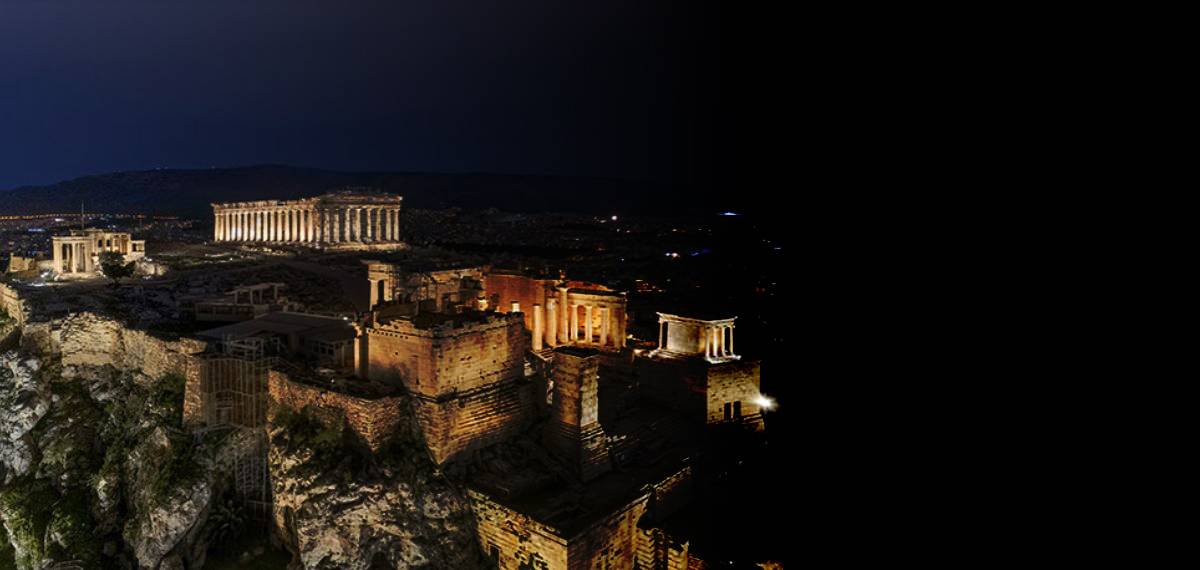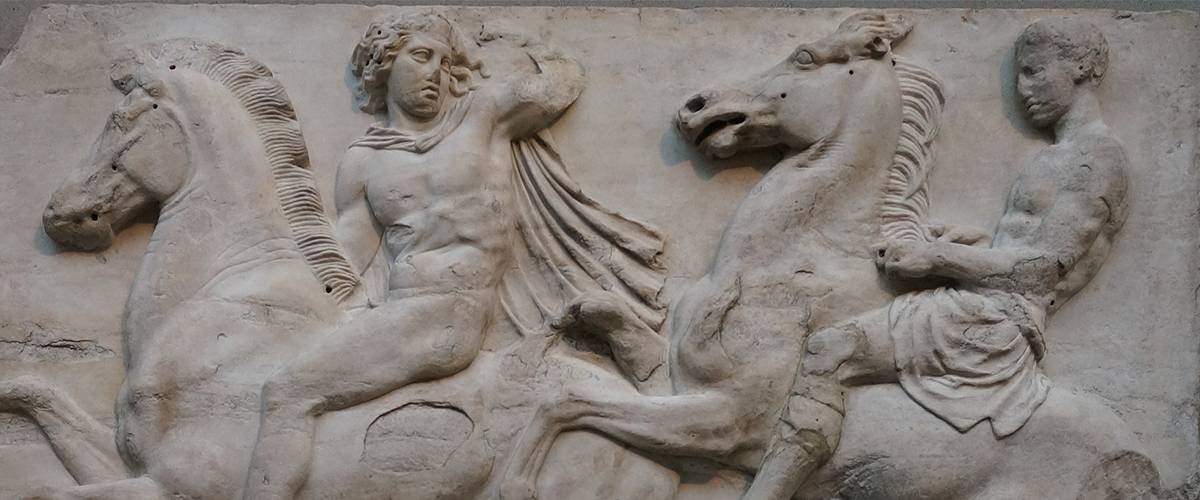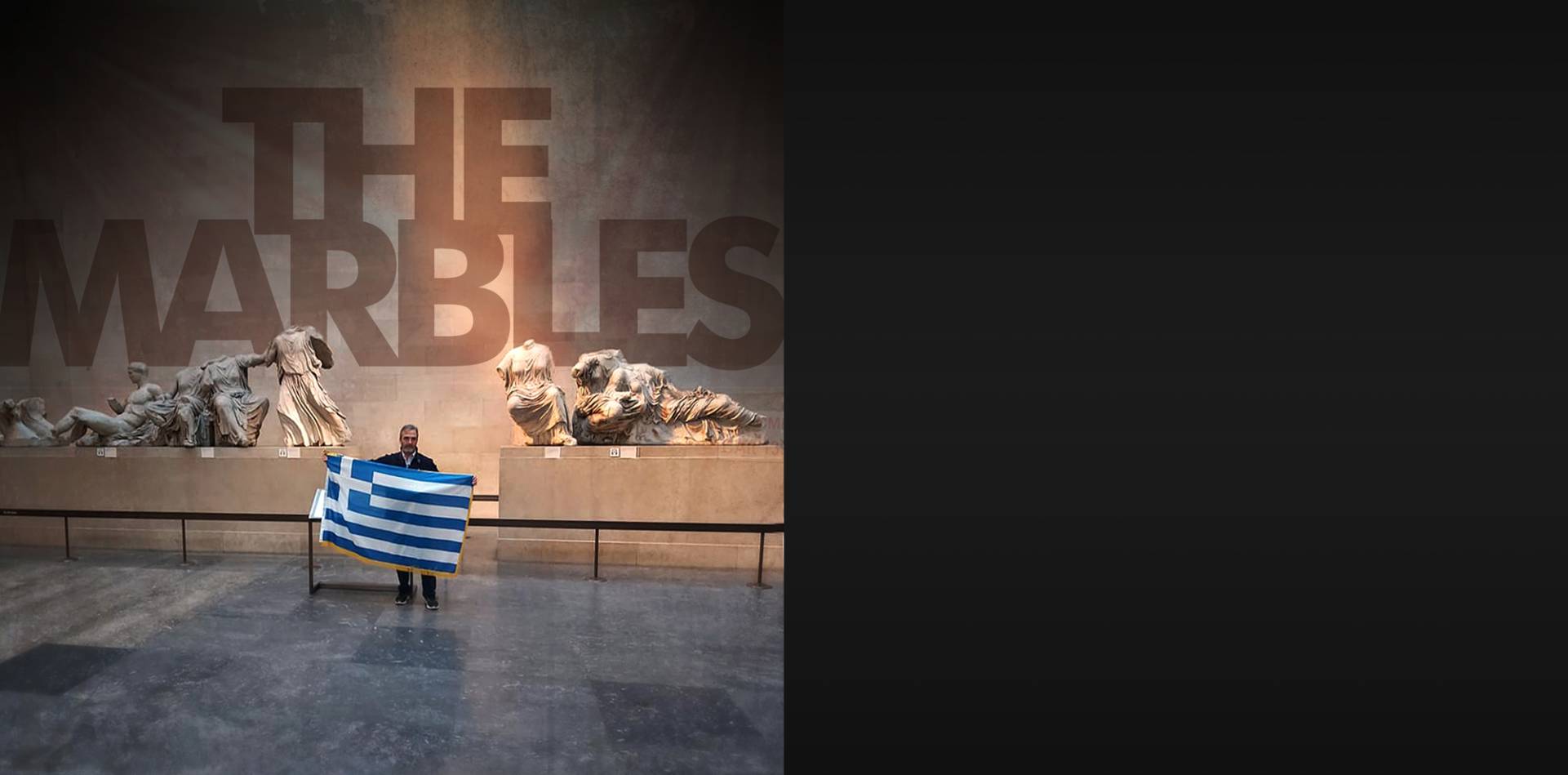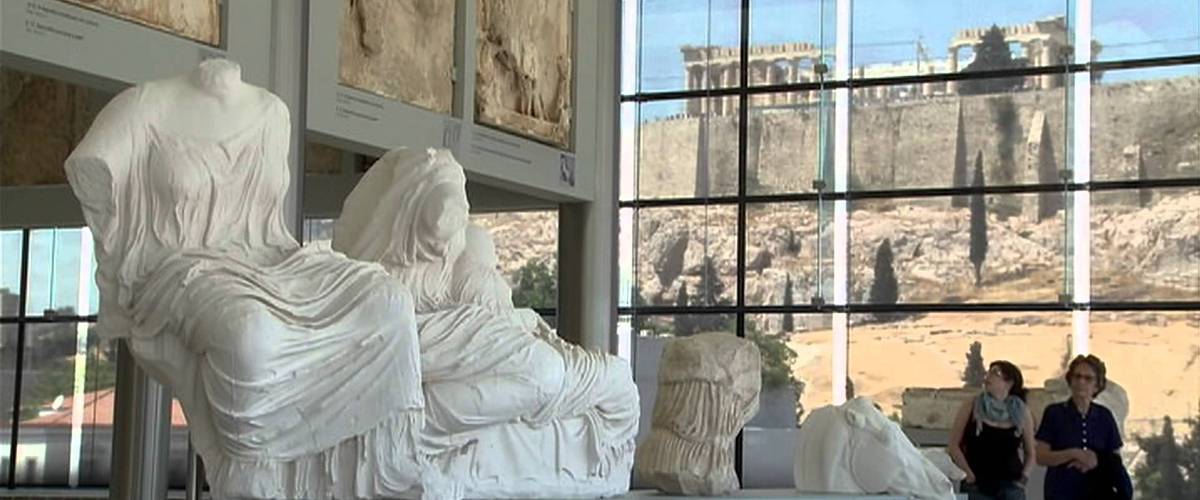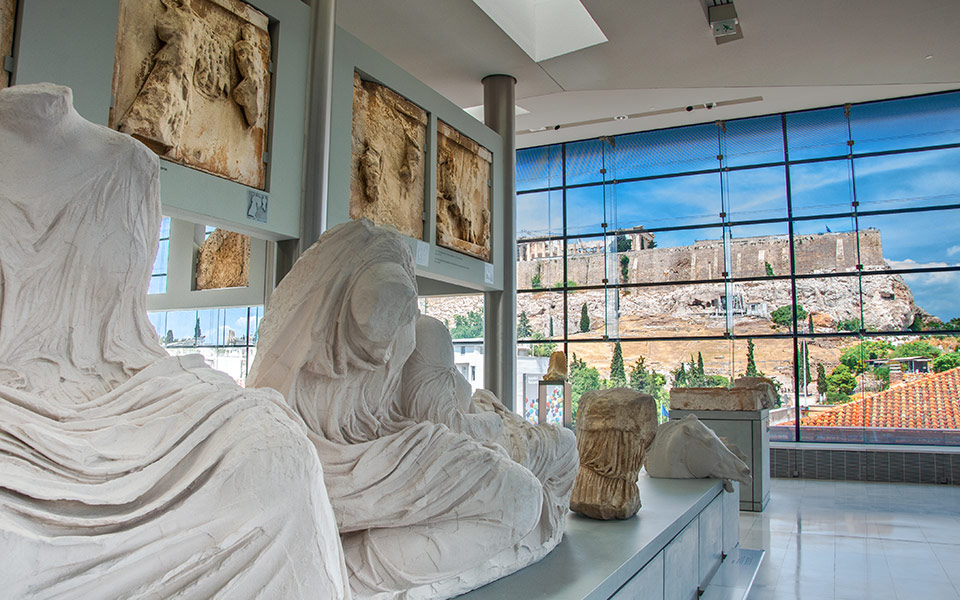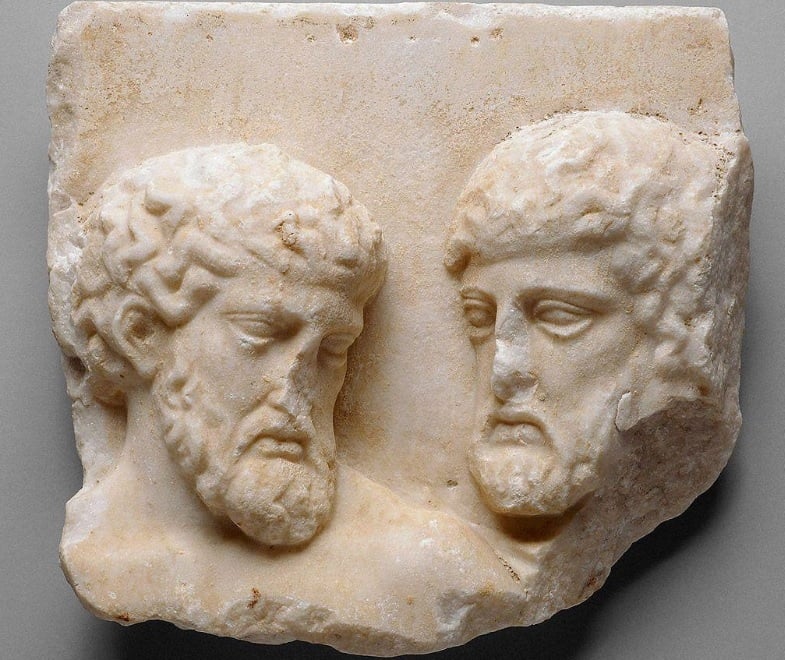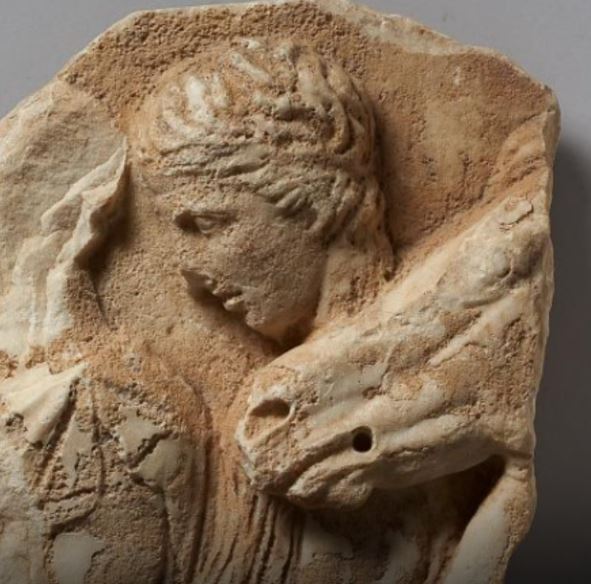Today, in Ta Nea, a double page spread written by Greek Minister of Culture, Dr Lina Mendoni. The topic the reunification of the sculptures from the Parthenon, still harshly divided mainly between two great museums of the world: the Acropolis Musem in Athens and the British Museum in London. The latter founded in 1753, opened its doors in 1759.
Dr Mendoni picks up on the current crisis at the British Museum, reminding readers that amongst the argument used by the British Museum, the safety of the Parthenon Marbles remains.The claim is that the sculpures "are safer in London than in Athens", and indeed to raid Room 18 would be difficult. But safety as Dr Mendoni explains, is one that covers many aspects, and her article takes readers through the issues that arose from the moment that Lord Elgin decided to forcibly remove entire sections of the frieze, the metpes and pedimental figures from the Parthenon.
The ship “Mentor”, carrying 17 boxes of Sculptures, sank off the island of Kythira in September 1802. The retrieval of these Sculptures was completed two years later. But in some of them, already, the damage from erosion was irreversible. When the Sculptures arrived in England, Elgin stored them in damp and unsuitable sites. Finally, the Lord – acting as a looter – sold the Sculptures to the British Government, which entrusted them to the care of the British Museum, which, knowingly, accepted the products of the theft. The British Museum ignored the huge scandal that had broken out in British and international public opinion, the direct accusations and the strong protests of prominent personalities of the time throughout Europe. This is the position to which it adheres to this day.
From 1816 and for about a century, not only were the Sculptures exposed to the extreme air pollution of the British capital, but also they were exhibited in a room heated by coal-burning chimneyless heaters. This resulted in the blackening and corrosion of their surface. The Sculptures were cleaned and washed in a thoroughly improper way twice after moulds had been taken from them, in 1817 and 1837, and several more times up until the 1930s.
Dr Mendoni's careful analysis of the damage caused, not least the controversial cleaning of the Marbles, not once but on several occassions urges the reader to reflect about the British Museum's care of these peerless sculptures.
In the 1930s, Lord Duveen employed agents, secretly, who used copper brushes and caustic materials to remove the ancient patina, as has been documented by William St. Clair in two of his books. However, "the scraping of the patina sometimes resulted, as one could expect, in the removal of the surface of the marble itself, especially in the most sensitive areas in terms of preservation. This fact is also attested by the examination of samples taken from the patina. Consequently, the anomaly that the scraping created on the surface of the marble had to be smoothed out according to the abovementioned aesthetic specifications. To ensure uniformity, this smoothing was also extended to surfaces that were free of patina. The project of smoothing the surfaces on the background of the high-reliefs and on the sculpted figures themselves increased the damage to the surfaces….”. This led to a considerable - and in certain cases excessive - loss of material. “Some of the metopes represent glaring examples of this intervention. Thus, for instance, the reduced, because of grinding, surface of both the background and the figures of the high-relief is not only macroscopically visible but also, in certain cases, measurable”, according to the preliminary report by the team of Greek experts, who examined the Sculptures in 1999, after negotiations between the Greek Ministry of Culture and the British Museum. Their “skin” was destroyed.
Some of us have been in Room 18 when rain water came in through the leaking glass roof. Others have protested in that room, and more so post the opening of the Acropolis Museum. Visitors in the winter months of December, January and February, saw huge blow heaters trying to provide heat.Then in summer months, large fans, and the Fire Exit door open to provide ventilation to an otherwise stuffy room. There are no climate controls in the galleries of this ancient museum that houses so many amazing treasures from countries right across the globe.
But what is devastating in Dr Mendoni's writing, is this paragraph, the words are those of Neil MacGregor, the previous Director of the British Museum. Often describes as the British Museum's charismtic Director, he too failed the sculptures.
British Museum Director, Neil MacGregor, commented that: “When you put sculpture on public show you expose it to damage. Every museum in the world that has sculpture on public show has a record of regular damage. Graffiti, scratching, bumping whatever. You simply cannot put sculpture on show at a level where people can see it to study it without accepting the risk. It's the price you pay for making it available”.
Dr Mendoni, concludes her article with this:
The perpetual abuse and damage to the Parthenon Marbles at the British Museum are long-standing and ongoing. The recent spate of thefts apparently by the responsible curators, coupled with the silence of their heads, who neither take care to protect the collections nor ensure the appropriate security measures, prove that the “hospitality” provided to the masterpieces of Pheidias at the British Museum has always been inadequate, incomplete and problematic. The “safe-keeping” of the Sculptures at the British Museum is proving disastrous and dangerous. The urgent need for their reunification in Athens is now an act of Justice.ack in London,the British Museum's current crisis continues, and we sincerely hope that the right way forward is found. That the truth leads to better solutions for this very British institution, its workforce and visitors.
In considering Dr Mendoni's words, a whole world acknowledges that the reunification of the Parthenon Marbles would be an act of justice for this specific collection of cultural heritage so harshly removed when Greece had no voice.
To read the English translation kindly provided by the Greek Ministry for Culture and Sport, follow the link here.
We were also reminded of those words used by Christopher Hitchens: "And one day, surely, there will be an agreement to do the right thing by the world’s most “right” structure." May that day be as soon as possible, and because the Parthenon still stands.
Sunday, 18 June 2023 at 16:00 in the Parthenon Galleries of the British Museum acclaimed actors Bill Nighy and Simon Callow CBE; TV presenter and journalist Baroness Joan Bakewell; Stockard Channing, whose screen credits range from Grease to The West Wing; Anna Savva, the Anglo-Greek actress memorable in The Durrells, and Janet Suzman DBE, Chair of the BCRPM, read Byron's 'The Curse of Minerva'. This was the first time that this 212-year-old poem was read in the British Museum's Room 18. Alexi Kaye Campbell, playwright and member of the Committee, was MC and introduced the readers, paid tribute to the Acropolis Museum and reminded us that Byron's poem contnues to have relevance today.
The Ham and High and London's Local News published the event.
On Sunday, the UK correspondents for Skai Greece, Thanasis Gavos and ERT's Nastasia Kantzavelou also attended, with special thanks to both Philippos and Andriana Kantzavelou for holding up the banner! Coverage also in Ta Nea by Yannis Andritsopoulos.
Photos from the event below, courtesy of David Wilkinson,Gillian Boll, Stuart O'Hara and Marlen Godwin:






















